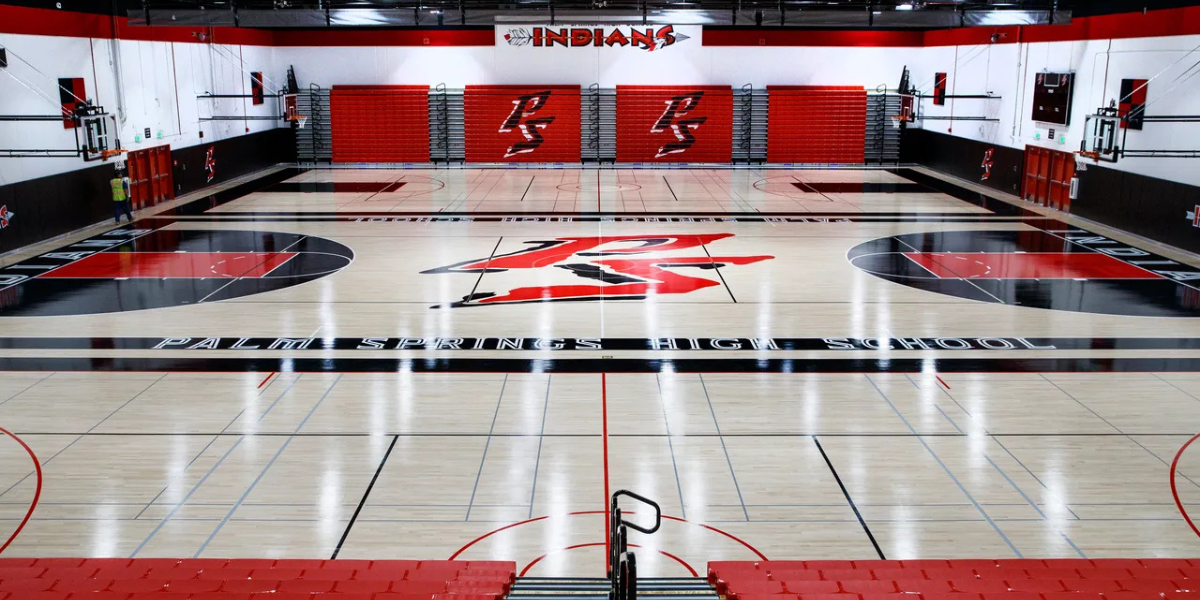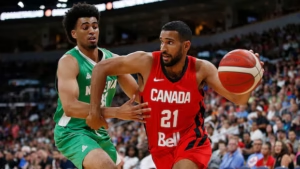High school basketball games are an exciting and fast-paced experience for players, coaches, and fans alike. Whether you’re a parent trying to follow your child’s game or a newcomer to the sport, understanding the structure of a basketball game is crucial. One of the most common questions people have is, “How long is a quarter in high school basketball?”
High school basketball games are a lot like youth games in how they’re set up. Each game is made up of four quarters, and each quarter lasts 8 minutes. When you add in things like timeouts, halftime, and stoppages, the whole game usually takes around an hour and a half to finish.
In this article, we’ll dive into the details of how long each quarter lasts, explore how high school basketball time differs from other levels of the game, and break down key concepts surrounding game time management. Whether you’re a player, coach, or fan, by the end of this article, you’ll have a clear understanding of the game’s timing and how it affects play.
How Long is a Quarter in High School Basketball?
In high school basketball, each quarter lasts for 8 minutes. This is different from the professional and college levels, where quarters or halves can last longer. Here’s a quick breakdown of how the game works:
- High School Basketball: 4 quarters, each lasting 8 minutes.
- NBA and Professional Basketball: 4 quarters, each lasting 12 minutes.
- NCAA College Basketball: 2 halves, each lasting 20 minutes.
Why 8 Minutes Per Quarter in High School Basketball?
The decision to have 8-minute quarters in high school basketball is mainly due to the age and endurance of the players. High school athletes, who range from around 14 to 18 years old, may not have the stamina required to play longer quarters at the intensity seen in professional or college games. The shorter quarters help maintain the pace of the game while also considering the players’ physical development.
Factors Affecting Game Duration
While quarters are set at 8 minutes each, the total duration of a high school basketball game can vary depending on several factors:
-
Timeouts: Coaches can call timeouts during the game. Each team is allowed a certain number of timeouts per half, which can extend the overall game time.
-
Halftime: Halftime usually lasts about 15 minutes. This is the break between the second and third quarters, during which teams regroup and adjust their strategies.
-
Fouls and Free Throws: If a player is fouled during certain situations, they may be awarded free throws, which add extra time to the game. The number of fouls committed by each team can affect the length of the game as well.
-
Overtime: If the score is tied at the end of the 4th quarter, the game goes into overtime. Overtime periods typically last 4 minutes and can continue until one team wins.
-
Clock Stoppages: The clock does not run continuously in high school basketball. It stops during timeouts, fouls, and when the ball is out of bounds. These stoppages can add to the total game time.
What Happens During Timeouts and Halftime?
-
Timeouts: During a timeout, both teams discuss strategies and make necessary adjustments. The game clock is paused during these breaks, but the duration of the timeout varies. Typically, high school teams get 5 timeouts in a game, with each lasting 30 seconds to 1 minute.
-
Halftime: At the midpoint of the game, there is a halftime break, which is usually about 15 minutes. This provides players with a chance to rest and for coaches to make adjustments to their game plans.
How Does Game Duration Affect the Pace?
Because each quarter in high school basketball lasts 8 minutes, the pace of play is typically faster than at higher levels like the NBA. Players need to make quick decisions, and every possession counts as the game clock ticks down. The shorter quarters also mean that coaches and players have less time to execute complex strategies, so there’s often a greater emphasis on fast breaks, quick shots, and ball movement.
Comparing High School Basketball to Other Levels of Play
While high school basketball features 8-minute quarters, it’s important to understand how this compares to other levels of play:
How Long a Quarter is in High School Basketball
1. NBA (National Basketball Association)
When it comes to professional basketball, the NBA sets the standard for game format and duration. In the NBA, each quarter lasts 12 minutes, which is longer than what you’ll find in high school or college games. Since there are four quarters in a game, that adds up to 48 minutes of playing time on the clock.
But the total time to watch an NBA game is much longer than just 48 minutes. With timeouts, halftime breaks, fouls, replays, and other stoppages, a typical NBA game lasts around 2.5 hours from start to finish.
This longer format allows for more strategic plays, longer possessions, and a more detailed flow of the game. It also gives fans more action and drama—especially in close games that go down to the final buzzer or into overtime.
If you’re used to watching high school basketball, you’ll notice the pace and length of NBA games feel more intense and drawn-out, with players operating at peak skill and speed. This is one reason why professional games can feel so exciting—they’re not just longer, but they’re packed with high-level competition and moments that can shift the entire game.
2. NCAA (College Basketball)
When it comes to college basketball in the United States, things are a bit different compared to professional leagues like the NBA. In NCAA basketball—both men’s and women’s—the games are divided into two halves instead of four quarters. Each half lasts 20 minutes, which adds up to 40 minutes of gameplay in total.
But that’s just the actual playing time.
When you factor in things like timeouts, fouls, free throws, reviews, and the halftime break, a typical NCAA basketball game usually lasts around 2 hours from start to finish. This makes it a bit shorter than most NBA games, which tend to run closer to 2.5 hours.
One of the reasons the NCAA uses two halves instead of four quarters is tradition—this format has been a part of college basketball for many decades. It also gives the game a unique rhythm, with a big halftime break allowing teams to make adjustments.
So, if you’re planning to watch an NCAA game or attend one in person, you can expect the full experience to take about two hours. It’s a fast-paced and exciting game format that millions of college basketball fans enjoy every year.
3. FIBA (International Basketball)
When it comes to basketball played under FIBA rules—which stands for the International Basketball Federation—the game format is a little different from what you might see in college or professional basketball in the United States.
Under FIBA rules, basketball games are divided into four quarters, and each quarter lasts 10 minutes. That gives you a total of 40 minutes of actual gameplay, which is the same as in NCAA college basketball. However, since the time is split into quarters instead of halves, the flow and structure of the game feels a bit different.
Now, even though the clock says 40 minutes, the real-time length of a FIBA game is usually around 1 hour and 45 minutes to 2 hours. Why? Because there are timeouts, breaks between quarters, halftime, fouls, and referee reviews—all of which add to the total time.
FIBA rules are used in most international competitions, like the Olympics, the FIBA Basketball World Cup, and games played by national teams. It’s also the standard format in many countries outside of the U.S., including Europe, Asia, Africa, and Australia.
One of the main goals of FIBA’s 10-minute quarter system is to strike a balance between fast-paced action and giving players enough rest and coaching in between quarters. It’s kind of a middle ground between the longer 12-minute quarters used in the NBA and the shorter 8-minute quarters used in high school basketball.
So, if you’re watching a game governed by FIBA rules, you can expect it to be structured, competitive, and wrapped up in about two hours—making it a great viewing experience whether you’re a die-hard fan or just tuning in casually.
Game Management: How Timeouts and Substitutions Work
Timeouts, substitutions, and fouls all influence the pace of the game. Coaches can use timeouts to manage the flow of the game, make tactical adjustments, or simply rest players. Substitutions are frequent in high school basketball, especially as players tire over the course of the game. Each team has the ability to rotate fresh players in and out, ensuring that their team stays competitive during the 8-minute quarters.
High School Basketball: A Fast-Paced Game
High school basketball’s relatively short quarters contribute to a faster-paced and more intense game. Because each quarter only lasts 8 minutes, teams must stay focused and execute quickly. The game often involves a lot of fast breaks, transitions, and quick shots, keeping fans on the edge of their seats.
Key Differences in Timing Rules
In addition to the length of the quarters, there are other timing-related differences in high school basketball compared to other leagues:
- 24-Second Shot Clock: Unlike professional leagues that use a shot clock to limit how long a team can hold the ball, most high school games do not use a shot clock (though this varies by state). Without the shot clock, teams have more flexibility to control the tempo of the game, although they must still keep the game moving.
- Personal Fouls and Free Throws: A team in high school basketball enters the “bonus” after a set number of fouls, which means they can shoot free throws. This affects game flow, as each foul leads to additional stoppages.
Conclusion
Understanding How Long a Quarter is in High School Basketball is essential for players, coaches, and fans. The game consists of four 8-minute quarters, with timeouts, halftime, and fouls all affecting the overall length. Knowing this helps you manage expectations during games and gives you insight into how time is used and managed throughout a game.
Whether you’re attending a game, coaching a team, or simply a fan of basketball, understanding the rules of the game and how time is structured can improve your appreciation of the sport. With the unique pace of high school basketball, the focus on speed and strategy makes it a thrilling game to watch and participate in.




